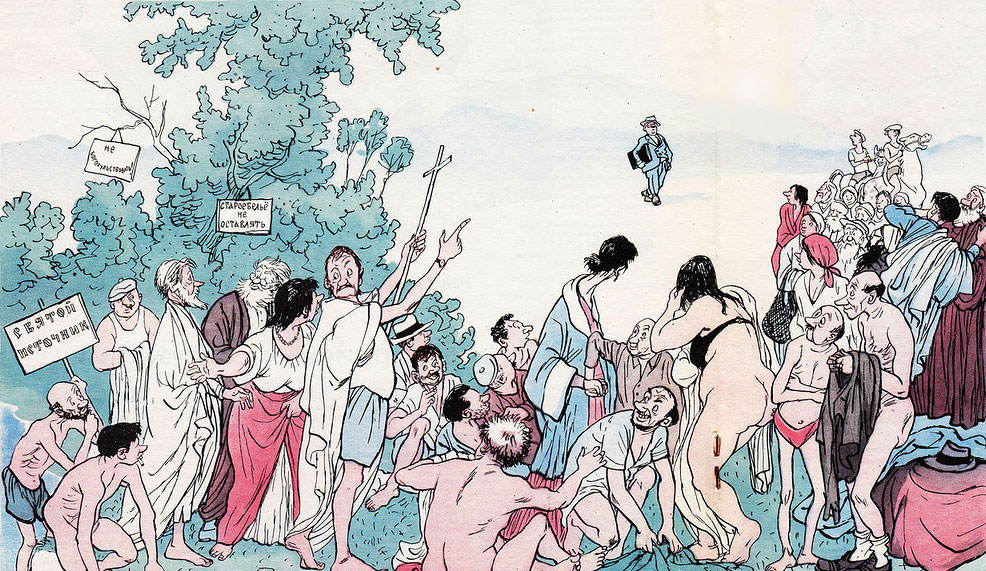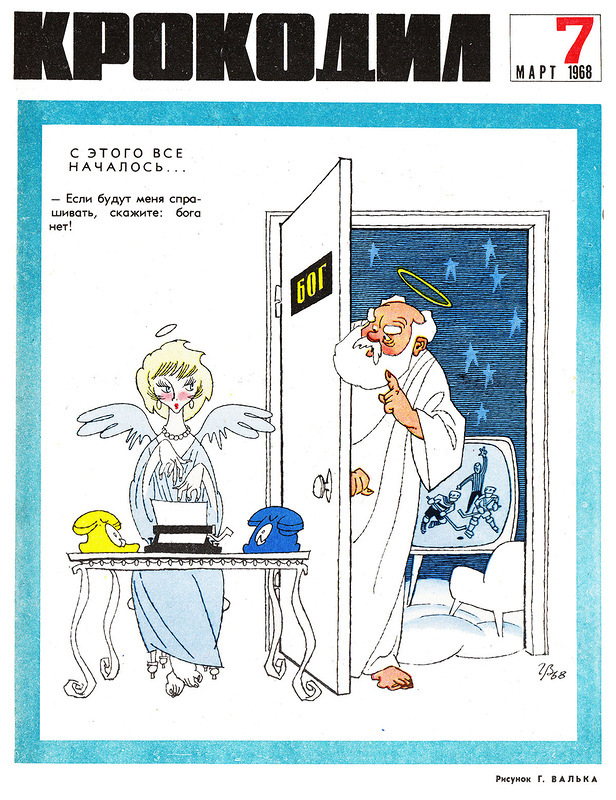The God delusion: how Soviet magazines satirised religion

The USSR, like France, had a rich vein of religious satire, as shown by this selection of cartoons from the 1960s and 70s
The shocking attack last week on the offices of the satirical magazine Charlie Hebdo and its aftermath showed that even in the 21st century, a religious drawing can divide the world. In reserving the right to mock organised religion, Charlie Hebdo saw itself as part of the strong tradition of secularism that has held sway in France since the revolution.
In Russia today, the situation looks rather different. While France insists on the separation of church and state, the Russian state looks to the Orthodox Church to prop up its conservative nationalist ideology. As the Pussy Riot trial demonstrated, the two in tandem can be a powerful force. (This troubling relationship was portrayed excellently this year in Andrei Zvyagintsev’s Golden Globe-winning film Leviathan).
However, the contemporary approach is miles away from that of Soviet society, in which there was no place for religion in the perfect and progressive proletarian future. The USSR had a strong tradition of religious satire: from the revolutionary propaganda in the 1920-30s to more lighthearted mockery in the postwar period. The Calvert Journal’s selection of caricatures from Soviet satire magazines Krokodil, Perets and Vozhyk showcase this tradition, and date from the 1960s and 70s.
Religion and the Space Race
Yuri Gagarin’s journey into space provided caricaturists with very rich material: numerous drawings show heroic cosmonauts in beautiful spacecrafts finding out that God does not exist — or if he does, he’s no use to the Soviet man.
Priests and clergy
For Soviet satirists, priests were always a symbol of the old world: capitalists and corrupted bureaucrats in disguise, cashing in on outdated beliefs. However sometimes they appear simply as cheeky characters who are no strangers to the sins of common people.
Atheist lectures
Atheist lectures were a major tool for anti-religious propaganda in the 1960s-70s. The caricaturists picked up on the lecturers’ appearance and manner straight away, illustrating their interactions with locals.
Religion and Art
The two seemingly opposite phenomena — the rise of abstract art and the persistence of religious belief — could appear equally irrational and weird to the Soviet frame of mind. It provided fruitful soil for juxtaposition.
Angels, demons and god
Rather than completely excluding supernatural characters, satirical magazines often used them to expose various aspects of Soviet society. Even if God existed, the magazines suggested, he would be completely redundant in the Soviet system.
Religion and common people
A lot of drawings show how awkwardly religion fitted in wth the daily lives of Soviet people: creating clashes between generations or confusion between saints and party leaders in people’s minds.


 ">
">
 ">
">







 ">
">


 ">
">
